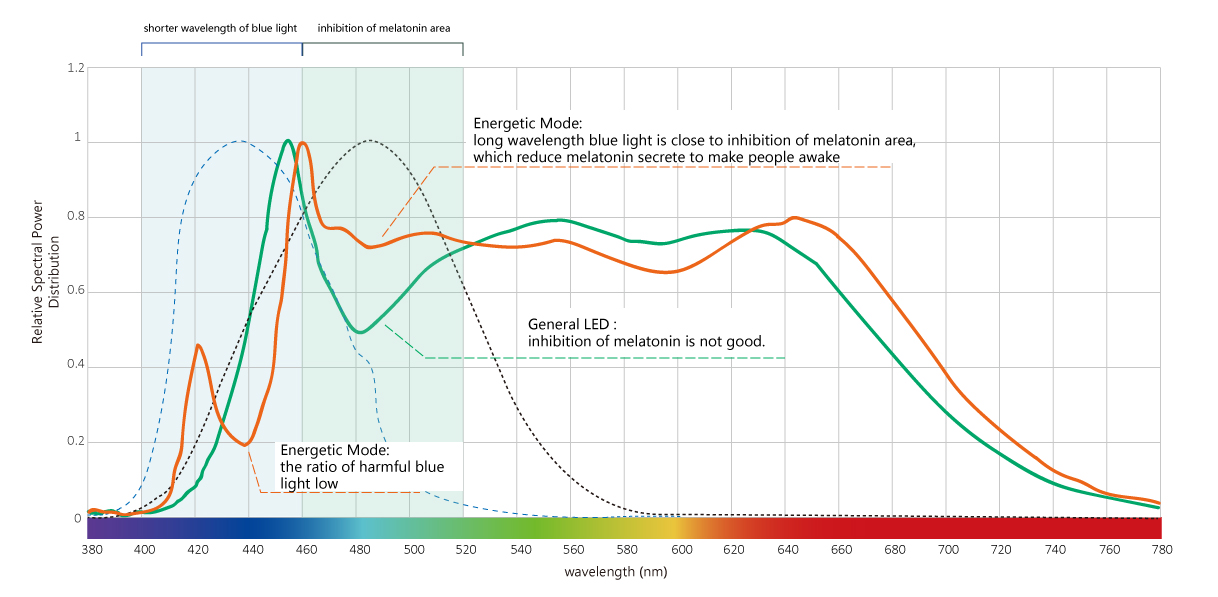Recently, the topic of blue light harming the eyes has been taken seriously and new LED development has focused on reducing the negative effect of blue light on the body. Theoretically, blue light wavelength ranges from 420nm to 480nm. According to one of the reports done by International Electrotechnical Commission (IEC), the shorter wavelength range of blue light from 415nm to 460nm is most likely to damage the eye. The report also mentioned that when exposed to these short blue light ranges, the risk of getting eye disease such as Macular degeneration will increase.
Most of the LED lighting and display backlight modules use blue light chip as it is the core emitting source. Hence, more and more anti-blue light products are emerging in the market. Current anti-blue light products primarily use a layer of anti-blue coating as a filtering effect or simply reduce the brightness of blue light. However, these types of solution will affect the color appearance. The light source would become yellowish and distorted, making people not able to distinguish the real color.

(Picture 1, ProLight)
Blue light as an important part of white light spectrum can be split into two halves at 455nm. The shorter wavelength of blue light from 420nm~455nm generates much greater energy and therefore causes the eye to get tired more easily. Furthermore, most white LED light products on the market with high color rendering index (CRI) contain the blue light (shorter wavelength 415nm to 460nm) strength that is 30~50% higher than other color. On the other hand, blue light with longer wavelength which is greater than 455nm, has lower energy and less damage to the eyes. In addition, some researchers have found that longer wavelength blue light from 450~480nm can maintain people’s concentration. Under this basis, ProLight will develop two types of products with new spectrum. One type is called the Energetic Mode (orange line of picture 1), which contains a spectrum recipe with mainly blue light greater than 460nm. Moreover, the spectrum has lower short wavelength blue light and strengthens the use of longer wavelength blue light. When compared the Energetic Mode spectrum to the current CRI 95 white LED spectrum (green line of picture 1), it is evident that the harmful blue light range is reduced and longer wavelength blue light ranges more. The bigger range of long wavelength blue light increases people’s concentration and can be used in places such as classrooms and offices.
The second type is called the Comfort Mode where the spectrum is created by using exclusive phosphor recipe. The spectrum is a combination of various colors and it greatly reduces the use of blue light to generate a bright but comfortable light source. This can be used in bedrooms or other places such as employee’s resting area and VIP rooms where people need rest and relax. Also, it can be designed to fit into light fixtures which contain both modes and becomes a dimmable smart lighting.
Sales contact: sales@prolightopto.com












